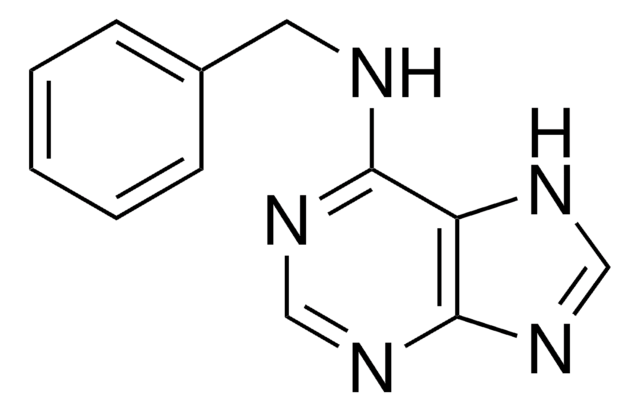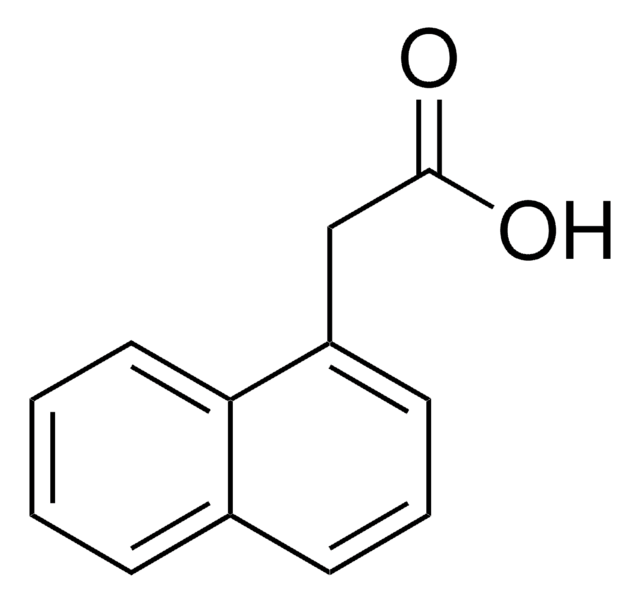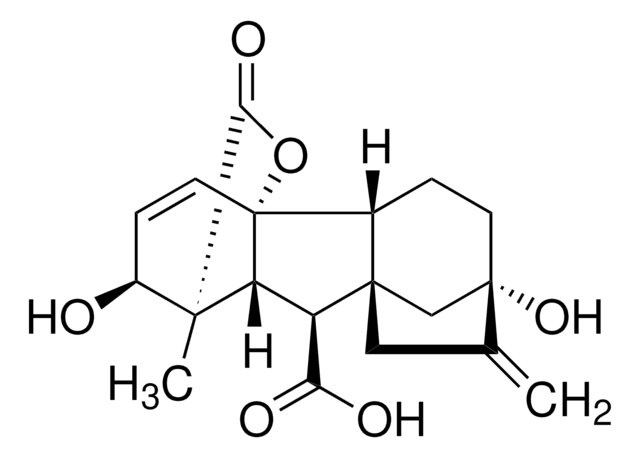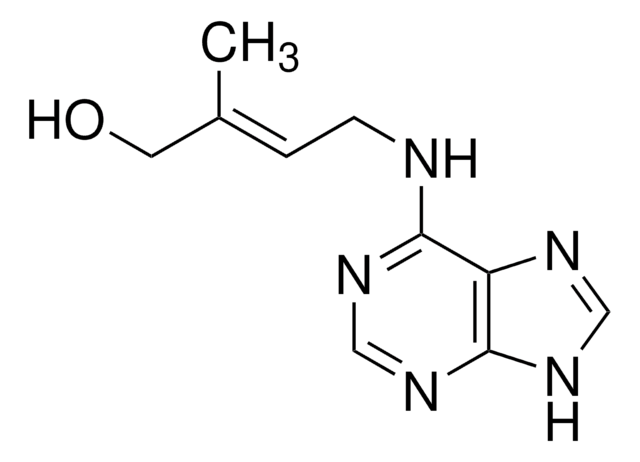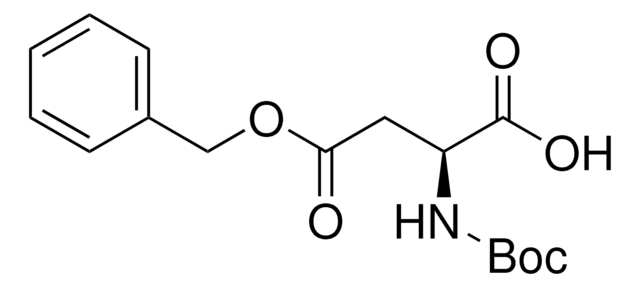Kluczowe dokumenty
I5386
Indole-3-butyric acid
suitable for plant cell culture, BioReagent
Synonim(y):
4-(3-Indolyl)butanoic acid, 4-(3-Indolyl)butyric acid, IBA
About This Item
Polecane produkty
linia produktu
BioReagent
Próba
≥98% (TLC)
Formularz
solid
metody
cell culture | plant: suitable
Zastosowanie
agriculture
temp. przechowywania
2-8°C
ciąg SMILES
OC(=O)CCCc1c[nH]c2ccccc12
InChI
1S/C12H13NO2/c14-12(15)7-3-4-9-8-13-11-6-2-1-5-10(9)11/h1-2,5-6,8,13H,3-4,7H2,(H,14,15)
Klucz InChI
JTEDVYBZBROSJT-UHFFFAOYSA-N
Szukasz podobnych produktów? Odwiedź Przewodnik dotyczący porównywania produktów
Zastosowanie
Uwaga dotycząca przygotowania
produkt powiązany
Hasło ostrzegawcze
Danger
Zwroty wskazujące rodzaj zagrożenia
Zwroty wskazujące środki ostrożności
Klasyfikacja zagrożeń
Acute Tox. 3 Oral
Kod klasy składowania
6.1C - Combustible acute toxic Cat.3 / toxic compounds or compounds which causing chronic effects
Klasa zagrożenia wodnego (WGK)
WGK 3
Temperatura zapłonu (°F)
Not applicable
Temperatura zapłonu (°C)
Not applicable
Środki ochrony indywidualnej
Eyeshields, Faceshields, Gloves, type P2 (EN 143) respirator cartridges
Wybierz jedną z najnowszych wersji:
Masz już ten produkt?
Dokumenty związane z niedawno zakupionymi produktami zostały zamieszczone w Bibliotece dokumentów.
Klienci oglądali również te produkty
Protokoły
Przewodnik referencyjny i przewodnik przygotowania do stosowania antybiotyków i środków przeciwgrzybiczych w hodowli tkanek roślinnych.
Nasz zespół naukowców ma doświadczenie we wszystkich obszarach badań, w tym w naukach przyrodniczych, materiałoznawstwie, syntezie chemicznej, chromatografii, analityce i wielu innych dziedzinach.
Skontaktuj się z zespołem ds. pomocy technicznej